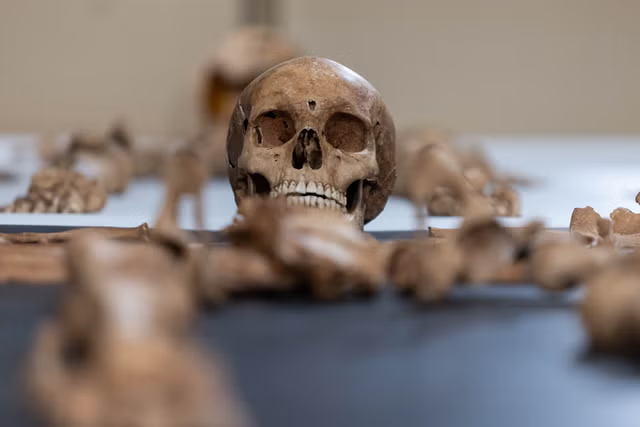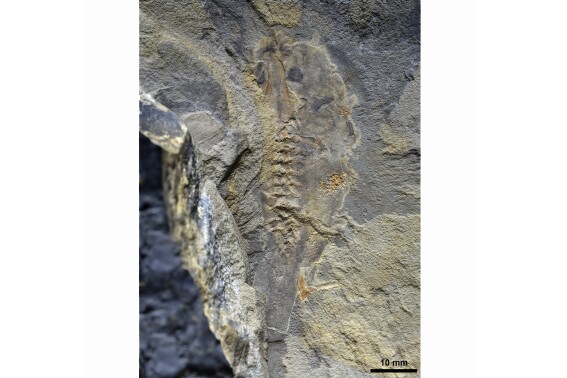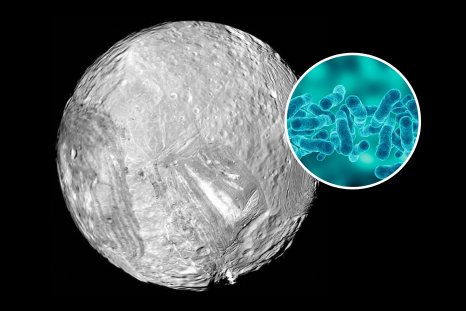Archaeologists have uncovered a "unique" gold artifact dedicated to an ancient deity at the site of a Roman fort, hinting at the existence of a lost temple.
The votive plaque is among the "most important" discoveries revealed by excavations conducted this year at the Roman fort of Apsaros in Georgia—a country that straddles the boundary between Eastern Europe and West Asia in the Caucasus region—Radosław Karasiewicz-Szczypiorski, one of the leaders of the archaeological expedition, told Newsweek. The researcher is affiliated with the Polish Centre of Mediterranean Archaeology (PCMA) at the University of Warsaw (UW).
During the Roman period, Apsaros was an important port and garrison on the Colchis coast—a term that refers to a historical region on the eastern coast of the Black Sea, roughly corresponding to what is now western Georgia—Karasiewicz-Szczypiorski said. Apsaros, constructed around 2,000 years ago, was of particular importance in the time of the Roman emperors Trajan (who ruled from A.D. 98-117) and Hadrian (who ruled from A.D. 117-138).
The votive plaque found during the 2024 excavation season at the site, which ran from mid-May to the end of July, is essentially a thin gold plate. It features a Greek inscription dedicated to Jupiter Dolichenus—a deity worshipped in the Roman Empire who was particularly revered by soldiers. The deity combined aspects of the Roman god Jupiter with an ancient Near Eastern storm and fertility deity worshipped at Doliche in what is now southeastern Turkey.
"Votive placards were left by worshippers at places of worship for various deities," Karasiewicz-Szczypiorski said. "Few gold plaques have survived, but it can be assumed that in the Roman period worshipers left many at places of worship for various deities."
The discovery of such an artifact at Apsaros indicates that there was a temple of Jupiter Dolichenus near the garrison that has yet to be discovered.
"This is indicated by a number of other small finds but this last one is of particular significance. We hope to discover the temple of Jupiter in future seasons," Karasiewicz-Szczypiorski said.
"Remains of temples and other traces of the cult of this deity have been found at many garrisons. Some of our finds, however, are older and may be related to the initial stage of adaptation of the cult for military use," Karasiewcz-Szczypiorski said in a UW press release. "We hope that further research will not only find the temple of Jupiter of Dolichenus at Apsaros, but also confirm that Oriental influence spread west and north to many garrisons, including through soldiers periodically stationed at Apsaros."
Another key finding during this year's excavations were the remains of kilns used for firing amphorae, ancient container vessels that were often used to store and transport wine. The discovery confirms that there was a ceramic production center at Apsaros when the Roman army was not stationed there, according to the archaeologists. Amphorae produced in the Colchis coast region were widely used around the Black Sea.
"In recent years, we have also discovered a wine press near the fort," Karasiewcz-Szczypiorski told Newsweek. "We can therefore assume that the amphorae were filled with local wine and exported to other garrisons and ports on the Black Sea. Fragments of Colchian amphorae are found in many sites but it was not known where they were produced."
During the latest excavation season, work also continued at the residence of the garrison commander, known as Arrian's House. These investigations uncovered the third mosaic found in the building. The mosaic has been partially preserved on-site while some vulnerable fragments were transferred to a local museum for conservation.
"The mosaic that has been found is a series of fragments that were displaced from their original place as a result of [an] earthquake. We cannot yet reconstruct its appearance, but we know for now that there was a single red stripe running against a light background, which most likely formed a meander pattern," Karasiewcz-Szczypiorski said in the press release.
Taking into account the latest finds in combination with previously uncovered evidence, the researchers have been able to produce a preliminary reconstruction of the building's appearance.
"Much of what can be seen in the reconstruction is the result of painstaking research—so far we have only found one piece of painted plaster from the walls," Karasiewicz-Szczypiorski said.
"The color of the tiles in the reconstruction is the same as on the fragments of ceramic tiles discovered at the site, which are the remains of the collapsed roof. The colors used in the mosaics are consistent with those known from the broken fragments, although some of the patterns are from other mosaics."
The archaeological research at Apsaros is being co-led by Lasha Aslanishvili from the Cultural Heritage Protection Agency of Adjara—a region in Georgia.
"We presume that the garrison commander's house, discovered by archaeologists from the University of Warsaw and the Cultural Heritage Protection Agency of Adjara, was built to Arrian's order. The exceptional character of this residence is indicated, among other things, by the mosaic floors discovered in its interior," Karasiewicz-Szczypiorski told Newsweek.
Do you have a tip on a science story that Newsweek should be covering? Do you have a question about archaeology? Let us know via science@newsweek.com.
Disclaimer: The copyright of this article belongs to the original author. Reposting this article is solely for the purpose of information dissemination and does not constitute any investment advice. If there is any infringement, please contact us immediately. We will make corrections or deletions as necessary. Thank you.



